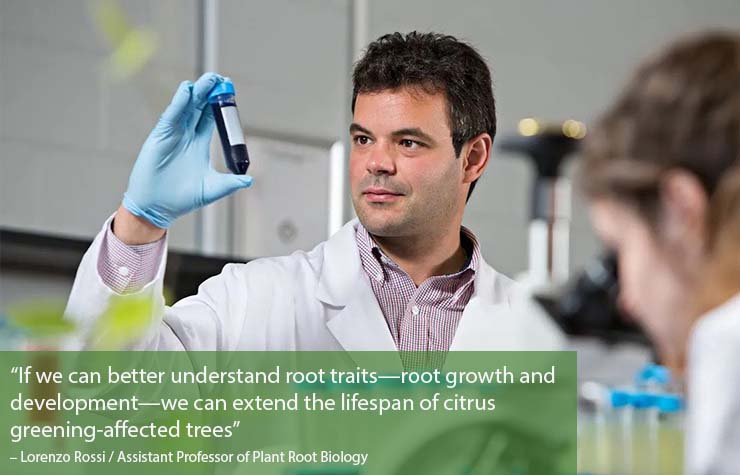September 28, 2021 at 6:42 pm | Updated April 18, 2022 at 1:10 pm | < 1 min read

Fifteen years of citrus greening disease (HLB) has had a devastating effect on Florida’s citrus industry, but Dr. Lorenzo Rossi and his team at the University of Florida, Plant Root Biology Lab are aiming to turn that around. Using insights gained from the CI-602 Narrow Gauge root Imager, the team has been able to forge a deeper understanding of below-ground traits of HLB-affected trees, allowing them to make industry recommendations based on a holistic picture of plant health.
In addition to shedding new light on the possibility of mitigating HLB, Dr. Rossi’s team is using the Root Imager to develop a comprehensive strategy surrounding peach growing in the region. By examining the ability of the crop to grow in native coastal soils, the researchers aim to give Florida growers a head start on the southern peach market, prior to the introduction of well-known commodities from Georgia and South Carolina.
Choosing the CI-602 for its rapid, non-destructive measurements, Dr. Rossi notes “You can go with traditional methods, but they’re all destructive. So, if you have a commercial grove it’s going to be challenging for you to find a producer who will allow you to kill trees to measure root growth every four months.”
Additional Research/links: https://hos.ifas.ufl.edu/plantrootbiologylab
Related Products
Most Popular Articles
- Transpiration in Plants: Its Importance and Applications
- Leaf Area – How & Why Measuring Leaf Area…
- How to Analyze Photosynthesis in Plants: Methods and Tools
- Plant Respiration: Its Importance and Applications
- The Forest Canopy: Structure, Roles & Measurement
- Stomatal Conductance: Functions, Measurement, and…
- Forest & Plant Canopy Analysis – Tools…
- Root Respiration: Importance and Applications
- The Importance of Leaf Area Index (LAI) in…
- Irrigating with Saline or Seawater






